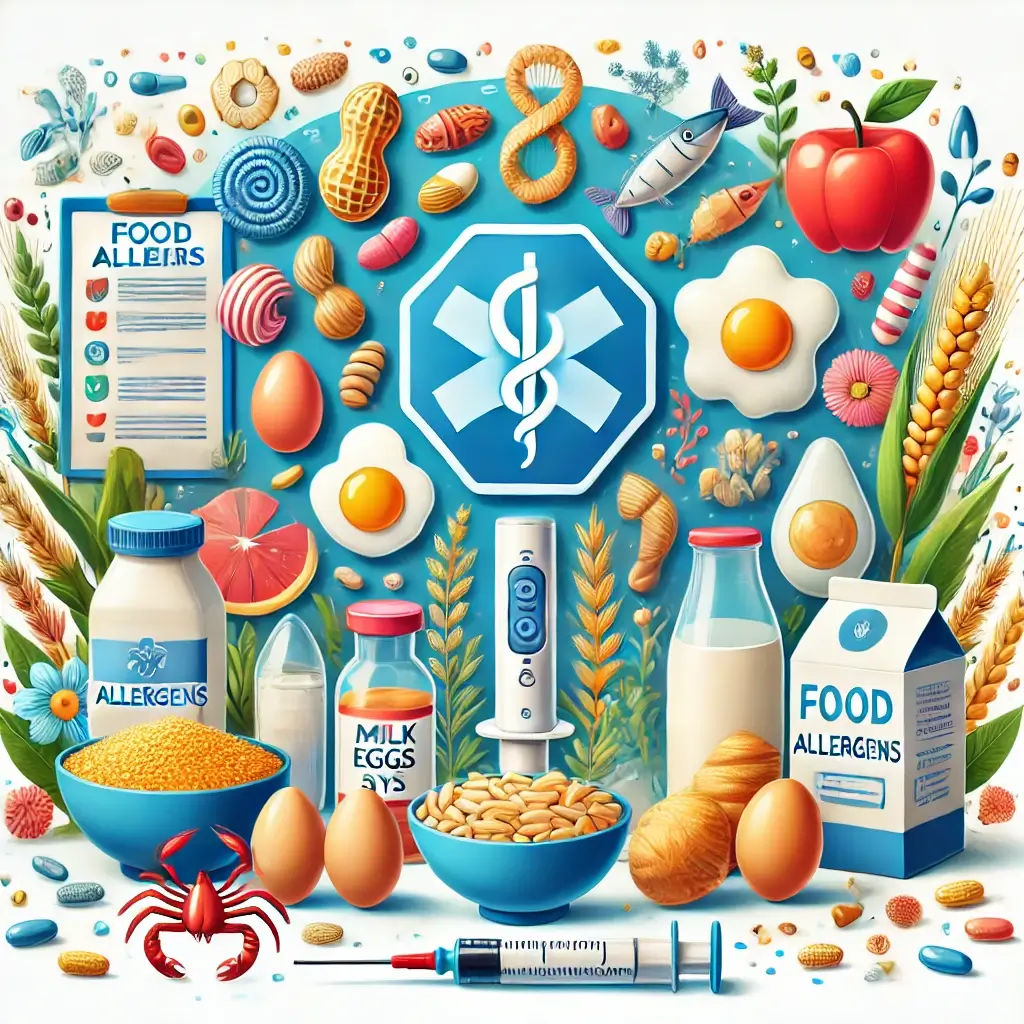The Global Impact of Food Allergies
Food allergies in industrialized nations are a pressing global health issue, affecting an estimated 10% of the population (Sicherer & Sampson, 2018). This immune system disorder arises when the body identifies harmless food proteins as threats, triggering a defensive reaction. These allergic reactions range from mild symptoms, such as itching and hives, to severe, potentially fatal conditions like anaphylaxis.
The Rising Prevalence of Food Allergies
In recent decades, the prevalence of food allergies among children has risen significantly. This surge has led to increased scrutiny of potential causes, including genetic predispositions, environmental factors, and changes in dietary habits. For those affected, food allergies pose daily challenges, from navigating safe eating options to managing the psychological burden of constant vigilance.
Overview of Food Allergy Impact
This article explores the underlying mechanisms of food allergies, highlights recent advancements in their diagnosis and treatment, and provides practical strategies for managing the condition effectively. By fostering awareness, education, and research, individuals and healthcare systems can work together to mitigate the impact of food allergies on everyday life.
Understanding the Mechanisms Behind Food Allergies
At the heart of food allergies is an immune system malfunction. The body erroneously identifies specific proteins in food—such as those found in peanuts, shellfish, or dairy—as harmful. This triggers the production of immunoglobulin E antibodies, which bind to allergens and activate mast cells and basophils, releasing histamine and other chemicals responsible for allergic symptoms (Sicherer & Sampson, 2018).
Common Food Allergens
Common food allergens include:
• Peanuts and Tree Nuts: High-protein foods that often cause severe reactions.
• Milk and Eggs: Common among children, though many outgrow these allergies.
• Shellfish and Fish: Allergies that typically persist into adulthood.
• Soy and Wheat: Found in various processed foods, complicating avoidance efforts.
Symptoms vary widely, from mild gastrointestinal discomfort to anaphylaxis with dramatic blood pressure drop. Understanding these triggers and symptoms is vital for effective diagnosis and treatment.
Advances in Diagnosis and Treatment
The field of allergy research has made significant strides in identifying and managing food allergies.
Modern Diagnostic Tools
Traditional diagnostic methods for food allergies, such as skin prick tests and serum-specific IgE testing, remain essential. However, newer techniques like component-resolved diagnostics enable more precise identification of allergenic proteins, leading to tailored management plans (Turner et al., 2022).
Breakthrough Treatments
Oral immunotherapy under medical supervision is a groundbreaking approach involving gradual exposure to an allergen to build tolerance. A study in The Lancet (2018) demonstrated its effectiveness in reducing reactions to peanut allergens over time, offering hope to individuals with severe allergies.
Prevention and Management Strategies
Early introduction of allergens, such as peanuts, in infancy has been shown to reduce the risk of developing allergies later. The LEAP study for early peanut allergy prevention highlighted the importance of this approach, changing guidelines for pediatric allergen exposure (Du Toit et al., 2015).
Living with Food Allergies
Management of food allergies requires vigilance and adaptability:
• Avoidance of Triggers: Reading food labels and communicating dietary restrictions in social settings are critical.
• Emergency Preparedness: Individuals with a history of anaphylaxis should carry an epinephrine auto-injector and receive training on its use.
• Support Systems: Connecting with support groups and advocacy organizations can alleviate the psychological burden of managing allergies.
Future Outlook and Conclusions
Food allergies, while challenging, are increasingly manageable through education, preparedness, and medical advancements. Innovations in oral immunotherapy and biological treatments offer new hope, while prevention strategies reshape our understanding of allergy development. For individuals living with food allergies, knowledge remains a powerful tool. Staying informed, vigilant, and proactive can lead to a safer and more fulfilling life. Continued research and public awareness are crucial for addressing this growing health concern and ensuring that those affected receive the care and support they need.
References
Sicherer, S. H., & Sampson, H. A. (2018). Food allergy: Epidemiology, pathogenesis, diagnosis, and management. The Lancet, 391(10119), 1018–1029.
Du Toit, G., et al. (2015). Randomized trial of peanut consumption in infants at risk for peanut allergy. New England Journal of Medicine, 372(9), 803–813.
Turner, P. J., et al. (2022). Advances in the diagnosis and management of food allergy. Nature Reviews Gastroenterology & Hepatology, 19(1), 1–16.
Sampson, H. A., et al. (2018). Current approaches to the diagnosis and management of food allergy. Journal of Allergy and Clinical Immunology, 141(1), 14–22.
